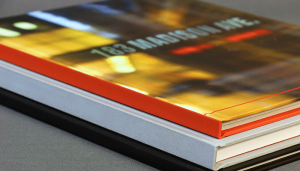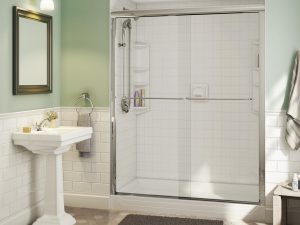Book binding is the art of putting a manuscript or printed copy of a book together so that it will be more appealing to the reader. This is the most common method of binding but there are others available as well. It depends on the desired appearance, and appeal of the book, as well as how well it will hold up under the binding process. The decision to use this type of binding should be made only after careful consideration of all the different choices that are available to you. The following are some considerations to keep in mind when deciding which binding method is best for your marketing materials:
To begin with, it is important to consider how you intend to use the binding process itself. For example, if you intend to use a book binding glue, you will want to choose one that will leave the pages intact when the glue has dried. Likewise, if you are going to use spiral binding or tape, you will want to select one that will not leave any spaces between the pages of the book. Once you have decided on these aspects, you can move on to the more technical aspects of choosing your binding material. For example, how will you want the pages secured?
 The type of material used in binding can make a big difference in the binding process itself. One of the most common types of material used for binding is leather, because it is both durable and attractive. Many book binders will use a single leather strip as the starting point of the pages. The strips are bound together with a metal clip, and then the whole thing is wrapped in tissue paper before being inserted into a binding machine. On the other hand, synthetic cloth fibers can be used for the same effect, although they can sometimes be stiffer than the natural cloth material.
The type of material used in binding can make a big difference in the binding process itself. One of the most common types of material used for binding is leather, because it is both durable and attractive. Many book binders will use a single leather strip as the starting point of the pages. The strips are bound together with a metal clip, and then the whole thing is wrapped in tissue paper before being inserted into a binding machine. On the other hand, synthetic cloth fibers can be used for the same effect, although they can sometimes be stiffer than the natural cloth material.
Of course, the type of binding you choose is not just about how your marketing materials look. You also need to make sure that your book binding materials are strong enough to withstand the environment. If the materials are too flimsy, the book could easily break during transit. If they are too rigid, the pages can’t bend and are unable to open and close properly. In general, it’s best to stick with materials that are a medium-to-firm consistency.
As you choose your binding material, you’ll want to consider whether or not you want to include your logo or business name on the pages of your book. This is often determined by how well your business is known, and by how easily customers can find your materials when they need them. If your business isn’t well known, or if customers don’t immediately recognize your name, a small business logo on the cover may be more beneficial than a large block lettering. Similarly, if you’re looking to emphasize your unique selling point (USP), you’ll want to choose a material that has an attention-grabbing color.
When you finally decide what material you’re going to use for your book binding, you’ll need to choose a reputable supplier. You may want to start out by asking other book binders what their recommendations are. Then call around to various suppliers and make a list of the ones that offer the type of materials you need at prices you can afford. Make sure you research for the printing services company in Scottsdale and the product they offer before making your decision. By following these steps, you’ll ensure that you choose the right book binding services for your marketing material.

 The time of the year that you choose to remodel is going to make a difference as well. Tub and shower installation is often completed during the summer months, but that isn’t always the case. When it is cold outside, you may find that you can install your tub and shower a bit further into the ground. This is a matter of personal preference, though you should know that if you want to be able to walk around in your new tub during the colder months, you are going to have to put it inside.
The time of the year that you choose to remodel is going to make a difference as well. Tub and shower installation is often completed during the summer months, but that isn’t always the case. When it is cold outside, you may find that you can install your tub and shower a bit further into the ground. This is a matter of personal preference, though you should know that if you want to be able to walk around in your new tub during the colder months, you are going to have to put it inside. Modern cabinet refinishing procedures take place inside your own home. You don’t have to take out the cabinets from your kitchen in order to have a new look. You can take the cabinets down and have them thoroughly refinished, refaced, or repainted in your own home. There is no need to leave your present setup up to the
Modern cabinet refinishing procedures take place inside your own home. You don’t have to take out the cabinets from your kitchen in order to have a new look. You can take the cabinets down and have them thoroughly refinished, refaced, or repainted in your own home. There is no need to leave your present setup up to the  There are many people who want to remodel their bathroom, but often don’t know where to begin. If you live in Fresno, you have many options when it comes to remodeling your bathroom. In particular, there is a very popular type of remodeling in Fresno – Wet Bathroom Remodeling.
There are many people who want to remodel their bathroom, but often don’t know where to begin. If you live in Fresno, you have many options when it comes to remodeling your bathroom. In particular, there is a very popular type of remodeling in Fresno – Wet Bathroom Remodeling.  One of the many challenges in a bathroom remodel is finding the right
One of the many challenges in a bathroom remodel is finding the right 
 If you choose to do your own sanding and refinishing, the easiest way is with a dustless sander. This kind of sander produces less dust than other models, so it’s great for people who have allergies or are prone to dust allergies. Dust-free sanding and refinishing hardwood flooring is also when a professional removes all visible sawdust by hand before starting work on it. However, if there are any visible sawdust left after sanding, they will be visible in the finished floor when the sander is done. So, be sure to tell your sander cleaner to keep the saw dustless during sanding and refinishing.
If you choose to do your own sanding and refinishing, the easiest way is with a dustless sander. This kind of sander produces less dust than other models, so it’s great for people who have allergies or are prone to dust allergies. Dust-free sanding and refinishing hardwood flooring is also when a professional removes all visible sawdust by hand before starting work on it. However, if there are any visible sawdust left after sanding, they will be visible in the finished floor when the sander is done. So, be sure to tell your sander cleaner to keep the saw dustless during sanding and refinishing.
 f you have specialized in any area of automotive transmission, your task will be easier than others. You will be dealing with batteries and clutches and so you should know about them well. You should also have the technical knowledge about the engine that you will be handling. Last but not the least, you should have worked in an auto repair shop before. By providing this information, you will prove yourself more capable than others to handle your new position as an automotive service technician.
f you have specialized in any area of automotive transmission, your task will be easier than others. You will be dealing with batteries and clutches and so you should know about them well. You should also have the technical knowledge about the engine that you will be handling. Last but not the least, you should have worked in an auto repair shop before. By providing this information, you will prove yourself more capable than others to handle your new position as an automotive service technician. One of the most important aspects in designing a bathroom for disabled and handicapped individuals is the layout and design. Once this task has been accomplished, it is time to focus on the different components of the bathroom that will make it suitable for the individual who will be using it. Its a good idea to consult
One of the most important aspects in designing a bathroom for disabled and handicapped individuals is the layout and design. Once this task has been accomplished, it is time to focus on the different components of the bathroom that will make it suitable for the individual who will be using it. Its a good idea to consult